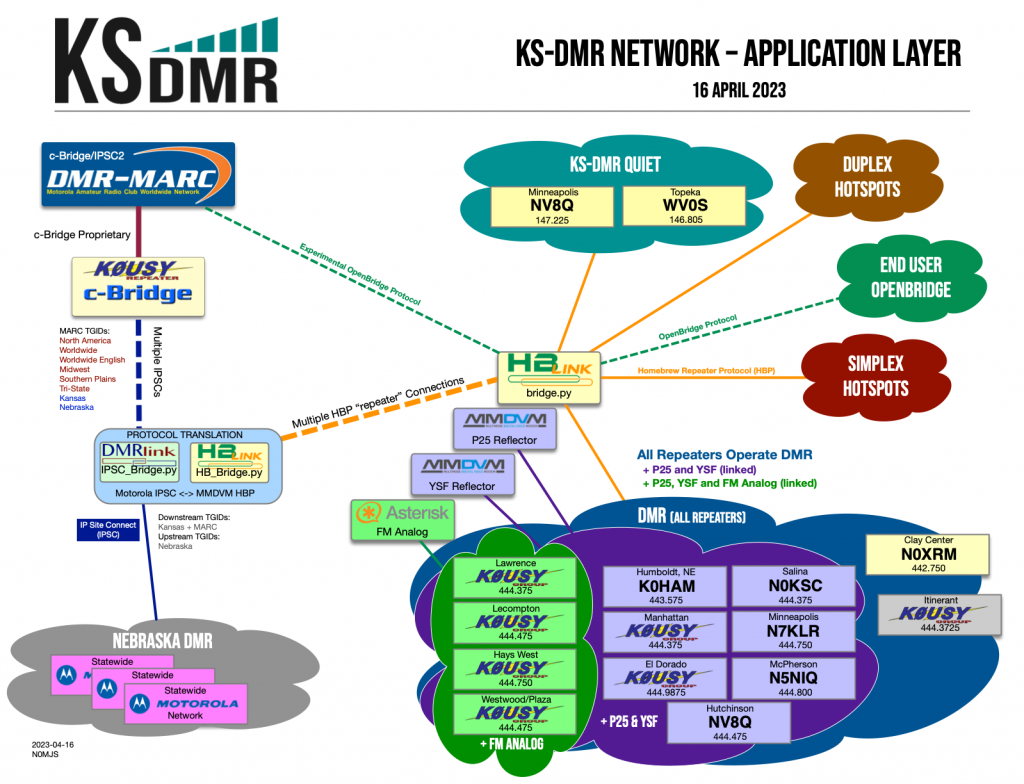KS-DMR uses a number of inter-operable building blocks. The diagrams here show the logical layouts for the repeaters and the software used to link them to each other; our “upstream” feeds, and the physical and logical back-end server and IP network infrastructure that facilitates it.
Other than a legacy c-Bridge which is used as a protocol translator for our DMR-MARC feeds, KS-DMR is built entirely on our own software. We use call-routing packages from DMRlink (Motorola IPSC networking) and HBlink (home-brew repeater protocol and OpenBridge networking) as the main building blocks of the network, with the IPSC<->HBP protocol translation modules in DMRlink and HBlink as our “bridge” between the two different protocols.

In the fall of 2018, we decided to bring our infrastructure in-house and stop using low-cost cloud servers (Digital Ocean, Atlantic, low-end AWS, etc.). Since that time we’ve had considerably increased reliability. The current physical server infrastructure is located in Kansas, and is fully virtualized to create a modular environment where different aspects of our system are contained in their own, isolated virtual machines. Our server equipment uses a dedicated 1Gbps connection to a 10Gbps XGS-PON local access network.
Our network environment is built on a secure, private overlay, including L2TP over IPSEC VPN connections for our repeaters and administrators. Within the repeater network the entire network is accessible without NAT, port-forwarding, etc., and as such, requires no “router rebooting” to keep the network functional. Repeaters where VPN is prohibited or unnecessary may still connect in a traditional fashion.


